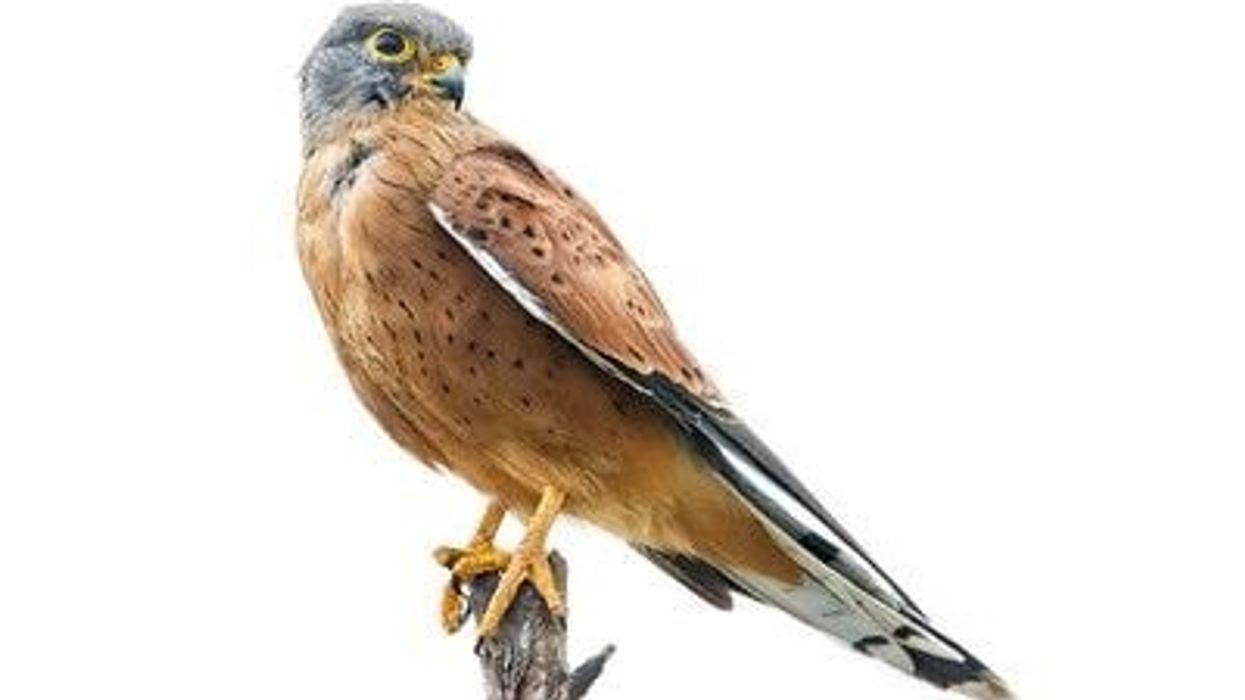The whistling kite (Haliastur sphenurus) is considered to be a medium-sized species of hawk found in mainland Australia. As a bird of prey, they feed on carrion. They are too noisy, regularly calling in flight with a clear descending whistle followed by a rapid series of rising notes increasing with the breeding season.
The adults have a light brown head and underparts with pale streaks, and the young ones have dark sandy brown wings with paler undersides. The underwings have a pale 'M' shape when they are open. Unlike gingerly brown parents, young chicks have short fluffy wings with paler undersides.
They have a wingspan of 3.9 ft (120 cm). Females are larger in this species. They are often seen around farms or near water.
During drought periods, they become nomadic to find food sources. As a scavenger, they can eat any carrion, which means that they are adaptable.
To find out more interesting facts and information about other animals, you can also check our guides on the Mississippi kite and swallow-tailed kite for more enriching and mind-blowing facts.
Whistling Kite Interesting Facts
What type of animal is a whistling kite?
Whistling kite (Haliastur sphenurus) or whistling kite is medium-sized raptors. These raptors are aerial masters and can snatch food and consume it mid-flight and are found in mainland Australia. A whistling kite is a bird of prey.
The mature birds have a light brown head and underparts with pale streaks, whereas the immature ones dark sandy brown wings with paler undersides and tails. In this species, the females are larger and heavier. They have long tails and short legs.
What class of animal does a whistling kite belong to?
Whistling kite (Haliastur sphenurus) belongs to the class of Aves that might be confused with a hawk or eagle. Their nest platform is built of sticks.
How many whistling kites are there in the world?
The population of the whistling kites is unknown, but their conservation status is of Least Concern which means the population of kite whistling is quite good in terms of numbers.
Where does a whistling kite live?
Whistling kites live in tall trees of woodlands, open country, and near water. They are found throughout Australia, New Caledonia, and much of New Guinea. Their nests are built of sticks in a tall tree that is reused, growing larger over time.
What is a whistling kite habitat?
This kite (whistling) is mostly found in woodlands, open country, near water in Australia. They can also be found around farms or anywhere carrion (dead animals) can be found.
They prefer tall trees to build their nest. They make a bulky nest platform, and the bulky nest platform is built of sticks in a tall tree, and their nests are reused, growing larger over time.
Who does whistling kite live with?
The whistling kites are monogamous birds found in Australia, and the male and the female birds live together throughout the year and breed actively and stay together where the nest platform is built.
How long does a whistling kite live?
The lifespan of a whistling kite is about eight years.
How do they reproduce?
Whistling kites are monogamous, with breeding pairs remaining in the territory throughout the year and defending the area where they build the nest. The bulky nest platform they build of sticks in a tall tree for breeding and maybe reused growing larger over time.
Both parents build the nest and incubate the eggs (the females do most of the incubation). They may be breeding two to three times a year.
The general breeding season is between June and October in the south, and the breeding season in the north is between February and May. The young ones stay with their parents after their first flight for about six to eight weeks.
What is their conservation status?
Their status said to be Least Concern by the IUCN Red List though there is little evidence that the species are declining in Australia due to the drainage of wetlands and decline in food supplies.
Whistling Kite Fun Facts
What does whistling kite look like?
The whistling kite is considered to be a medium-sized bird of prey found in Australia. It was given its name because of the descending whistle noises which it creates during flight.
The young of this species have light brown heads, brown wings with paler undersides and a tail, underparts with pale streaks, whereas the adults have dark sandy brown wings with a light brown head and underparts. Their underwings have a pale 'M' shape when they are open.
Females are larger and heavier than males. Their size ranges from 20-24 in (50.8-60.9 cm), and their wingspan of 3.9-4.7 ft (1.1-1.4 m). They have bone-colored legs and feet which are unfeathered.
They have a long tail and small head with the wingtips falling short of the tail tip when the bird is perched. Whistling kites soar on slightly bowed wings with their long flight feathers.

How cute are they?
You could call them cute as they are fluffy birds, but most people do not consider them cute. They make a squeaky sound that goes 'squuuuueeaakkk'.
How do they communicate?
Whistling kites communicate by calling during flight, or while perched, and even while at the nest.
How big is a whistling kite?
A whistling kite is a medium-sized bird ranging from 20-24 in (50.8-60.9 cm), and they have a wingspan of 3.9-4.7 ft (1.1-1.4 m). They are almost four times bigger than a chipping sparrow.
How fast can a whistling kite fly?
The whistling kite can fly at a speed of approximately around 118 mph (190 kph). Since it belongs to the family of eagles and hawks, it has a good speed when it comes to flight.
How much does a whistling kite weigh?
The whistling kite weighs around 1.3-2.2 lb (0.5-1 kg). Males weigh around 1.3-1.5 lb (0.5-0.6 kg), whereas females weigh around 1.5-2.2 lb (0.5-1 kg).
What are the male and female names of the species?
Males and females of this species are known as a male whistling kite and female whistling kite.
What would you call a baby whistling kite?
A baby whistling kite is called a young whistling kite or an immature whistling kite.
What do they eat?
Whistling kites prey on insects such as grasshoppers and caterpillars, rabbits belonging to small mammals, birds, fish, and carrion (dead animals). They are mostly scavengers even though they tend to take primary live prey. They are raptors who patrol the farms' wastelands and roads for dead animals, too, especially when live prey is scarce.
Are they dangerous?
They are normally not dangerous, but they can be dangerous if they are instigated or disturbed.
Would they make a good pet?
No, they would not make a good pet as they are a wild bird species, and as they are carnivorous, they tend to be dangerous.
Did you know...
Whistling kites, just like the hawks, can eat cats on rare occasions as they are scavengers and might be eating dead remains of a cat or roadkill. As whistling kites are diurnal birds, they mostly hunt during the day.
What are other names for whistling kites?
It is also called a whistling hawk or a whistling eagle.
Why do hawks whistle?
The whistling kite bird has been given this name because they make a unique descending whistle noise during their flight. They whistle to usually mark their territory while mating, to mark their strength against other hawks, and at other invaders.
Here at Kidadl, we have carefully created lots of interesting family-friendly animal facts for everyone to discover! For more relatable content, check out these bare throated bellbird facts and inca dove facts for kids.
You can even occupy yourself at home by coloring in one of our free printable whistling kite coloring pages.









